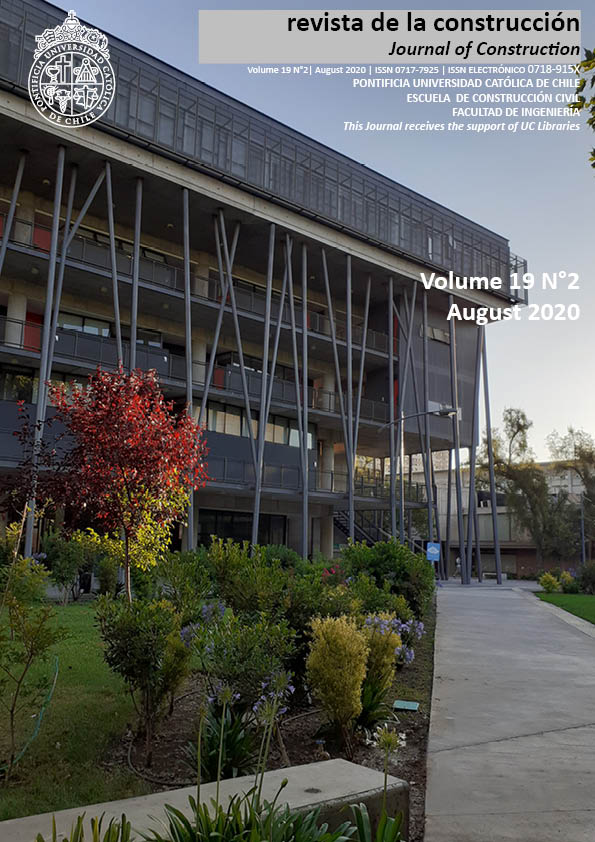A comparative study on ASCE 7-16, TBEC-2018 and TEC-2007 for reinforced concrete buildings
DOI:
https://doi.org/10.7764/rdlc.19.2.282-305Keywords:
TBEC-2018, TEC-2007, ASCE 7-16, earthquake standard, seismic forceAbstract
Doctrines of earthquakes and also the latest approaches of earthquake resistant building design in standards need to be revised periodically. While the revisions and updates in the American standards occur over periods of three or five years including limited subjects, in Turkey the same revisions are done once over long periods including the whole subjects of the standards. As examples the standards of 1975, 1998, 2007 and finally 2018 could be given. Especially, in 2018 standard (TBEC-2018) many changes were made over concepts and criteria. The procedure of calculating the earthquake loads in 2018 standards is similar to the one in the American standards of (ASCE-7-16), however for the element design the changes are shown as developments over the one of 2007 earthquake standard (TEC-2007). The changes made by 2018 standard for calculations of earthquake loads and their effects on civil engineering are very important factors of new building design. The earthquake load affecting a building which is the first factor of earthquake resistant building design shows important differences according to the condition changes in the standard. Based on this motivation in this study reinforced concrete frame type buildings of different elevations were researched by using ETABS (structural software for building analysis and design) according to linear equivalent seismic load method. According to the analysis results of the chosen buildings, a comparison for the base shear force, top displacement and relative story displacement between TEC-2007, TBEC-2018 and ASCE 7-16 standards was carried out. From the analysis results, it is found that for most of the soil classes while the maximum base shear forces in 3 and 5- story buildings are achieved at TEC-2007, the maximum base shear forces in 7 and 9- story buildings are achieved at TBEC-2018. Also, it is predicted that the higher increment in the design forces of buildings with higher elevations is obtained at TBEC-2018 for strong soils, and at TEC-2007 for weak soils. By considering cracked sections at TBEC-2018 the calculations displacement and period was affected as periods in TBEC-2018 were increased by almost 34% respected to TEC-2007. The same increment ratio was determined for ASCE 7-16 as 45%. Also, as a response for the increments in period, the spectral acceleration determined from the elastic spectrum diagram was decreased.
Downloads
Published
How to Cite
Issue
Section
License
Copyright (c) 2020 Ceyhun Aksoylu, Ahmed Mobark, Musa Hakan Arslan, İbrahim Hakkı Erkan

This work is licensed under a Creative Commons Attribution-NonCommercial-NoDerivatives 4.0 International License.





